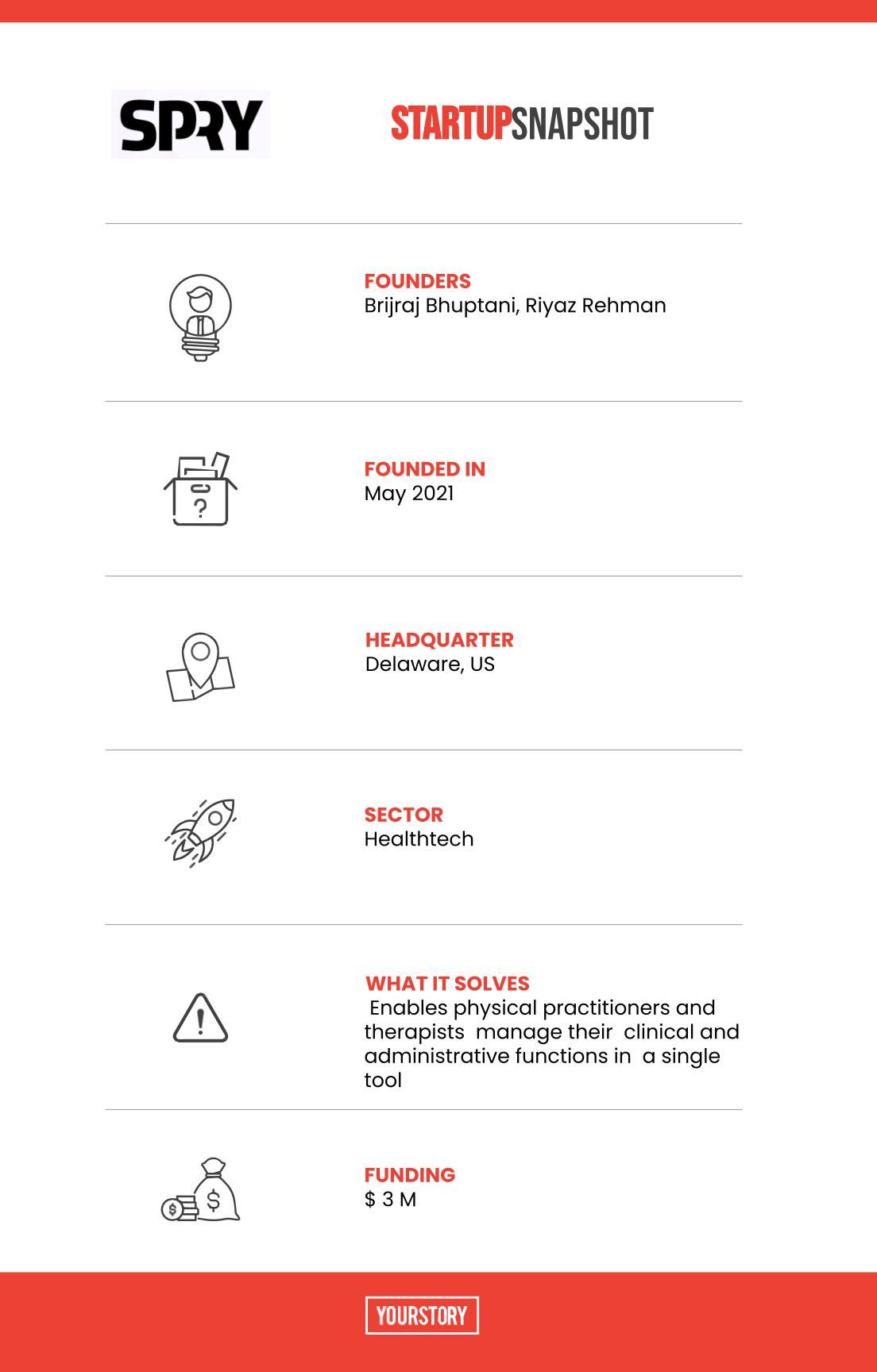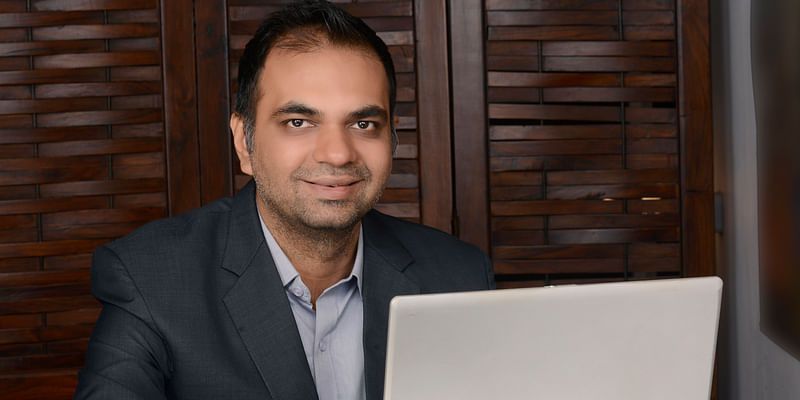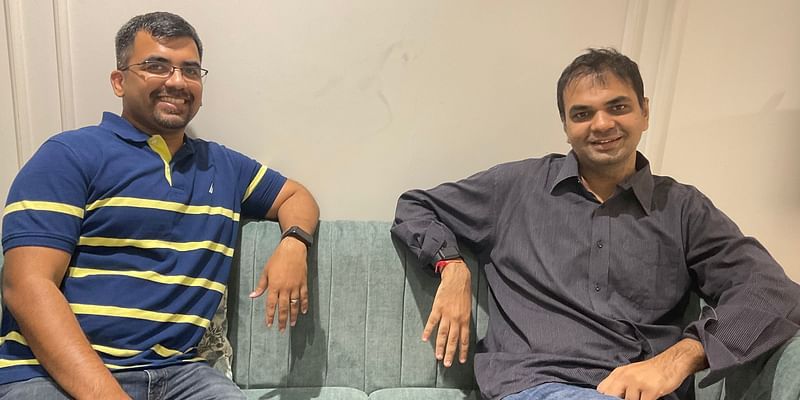With our lifestyles becoming increasingly sedentary due to our specialised jobs and work from home culture, more and more people have started complaining of some or the other form of body pain – be it niggles, back or neck pains, joint pains, etc – at a relatively young age. According to the World Health Organization (WHO), 2.4 billion people globally are impacted by some form of body pain.
Furthermore, musculoskeletal pain is identified among the top five rapidly growing non-communicable diseases, as per various reports. However, it is rarely addressed or diagnosed in traditional medical practices.
The musculoskeletal (MSK) medical industry in India is plagued by glaring gaps like a fragmented market and a lack of standard objective measurements to assess MSK health. This led Brijraj Bhuptani and Riyaz Rehman to adopt a tech-first approach to tackle this issue.
In May 2021, the duo decided to build – an end to end platform for musculoskeletal care, starting with physical rehabilitation.
Spry’s inception
Brijraj and Riyaz have known each other for six years.
They worked together at Ridlr – a mass transit platform in India, co-founded by Brijraj and later acquired by Ola. Following Ridlr’s acquisition, Brijraj served as Ola’s Chief Product and Technology Officer (CPTO). Riyaz was the Chief Business Officer (CBO) at Ridlr, handling its outreach and developing relationships with large public organisations.
A weekend sportsman for most of his life, Brijraj isn’t a stranger to injuries. However, he calls himself fortunate to have on-demand access to care from a family member who is a sports physician.
He realised that people tend to overlook their MSK pain and are resistant to lifestyle changes unless the pain grows too severe. He also found was that there was no single platform available to care providers to manage their patients end-to-end. This was the case even in the US, where clinicians would use software in silos.

YS Design Team
Brijraj tells YourStory, “There are close to 2.5 million physical therapists in the world who don't have any software built for their workflows; they mostly use Excel sheets. Physical therapy is a treatment with the longest doctor-patient interaction, encompassing from six weeks to years. In some cases, the problem is chronic, which is why doctors need to have a consolidated view to manage the end to end cycle.”
Also, physical rehabilitation often happens outside the clinic once the patient is assessed and an exercise programme is prescribed. The caregiver doesn’t get much visibility into how the patient is adhering to treatment or if they are making any progress.

Brijraj Bhuptani
“I spoke to several physical therapists and sports coaches across different cohorts in India; they were facing the same issues. I also spoke to many therapists in the UK, South Africa and the US. In the US, the problem was bigger as one had to account for insurance coverage as well. Connecting all the dots and keeping patient centricity in mind, building one platform to manage the end to end lifecycle of patient treatment seemed like a good problem to solve and was a huge untapped market,” he adds.
Working remotely with a team of 23 people, the startup plans to soon open its offices in Mumbai and Bengaluru.
At Spry, Brij heads go-to-market (GTM) strategy and technology, while Riyaz handles product and operations.

Spry Co-founders L:R - Riyaz Rehman, Brijraj Bhuptani
What it solves for
Headquartered in Delaware, US, Spry is a digital health platform focused on musculoskeletal health. It aims to make physical rehabilitation accessible to all.
As a vertical SaaS platform, Spry enables practitioners and owners of physical therapy businesses to manage all their clinical and administrative functions using a single tool. It supports all critical functions of the clinic – right from scheduling and patient intake to communication, assessments, EMR, home exercise plans, adherence tracking, and patient lifecycle management.
The startup relies on Computer Vision – a field of AI that enables computers and systems to derive meaningful information from visual inputs such as identifying key body parts. Through a combination of frontend and backend Computer Vision technologies, the startup presents users with a comprehensive MSK diagnosis.

Spry's self-assessment platform
The portal’s digital assessments on mobility, strength, and endurance are developed by Spry’s internal medical team using medical studies. The results are then externally validated by healthcare professionals at the Manipal Academy of Higher Education (MAHE) who research the impact of digital health on patient outcomes to enable Spry to develop digital-first therapeutics.
For providers/doctors, the startup serves as a platform to manage the end-to-end lifecycle of the patient. It offers features including demand generation, appointment, charting, revenue collections management, exercise content, CRM, payments, and care coordination.
For patients, the SaaS platform offers a virtual assistant therapist who helps them understand the treatment, guides them through the exercises, provides real-time feedback, nudges in cases of non-adherence, and ensures that recovery is in line with the plan. It acts as a virtual bridge between the patient and the therapist in charge. It is designed to break down the programme into measurable chunks, monitoring progress with objective feedback to increase the chances of patient adherence and favourable outcomes.
Currently, more than 100 clinics in India and seven in the US use Spry’s platform.
Market size and revenue
The problem of musculoskeletal health affects over two billion people worldwide, with MSK care costing exceeding $980 billion a year in the US alone (which is Spry’s initial focus area).
MSK conditions are fairly expensive to diagnose, treat and manage, and can have long-lasting repercussions in the lives of patients. MSK care costs US employers upwards of $100 billion a year and these issues form 30 percent of workers’ compensation costs. An isolated issue of back pain alone leads to loss of 264 million workdays per year, Brij states.
Closer to home, there are only 0.59 qualified physiotherapists per 10,000 people in India. Interestingly, as per the WHO guidelines, the ratio should be 1:10,000.
Addressing these problems, the startup earns revenue from providers.
“We make subscription revenue from the practice management software and CRM. In addition, we take a percentage of the transaction from insurance reimbursements and patient payments,” adds Brij.
It charges $350 per provider per month and earns 6 percent on the billing revenue.
Funding and way ahead
In August 2021, the healthcare platform raised $3 million in a seed round led by Together Fund. Other participants in the round included FJ Labs, Pareto, Knowledge Capital, AngelList, Whiteboard Capital, founders of Silicon Valley-based healthcare SaaS company Innovaccer, and C-suite executives from multinationals such as Blackrock, TPG, Softbank, and Qualcomm, among others.
Speaking of future plans, Brij mentions, “Our mission has been to make physical rehabilitation accessible and affordable to everyone globally. We have found an early product-market fit with clinics, and in the coming quarters, will extend our core offering to home health, outpatient departments of hospitals and skilled nursing facilities. In terms of geographic extension, the startup currently focuses on the US and India. However, we are getting significant interest from clinics and health systems in the UK and the Middle East. We will be expanding to those countries as well. Beyond physical rehab, we will naturally expand to other verticals like strength and conditioning, and physical wellness.”
Players like Hinge Health, Sword Health, Kaia Health, and WebPT are also operating in the same space.
Edited by Kanishk Singh


